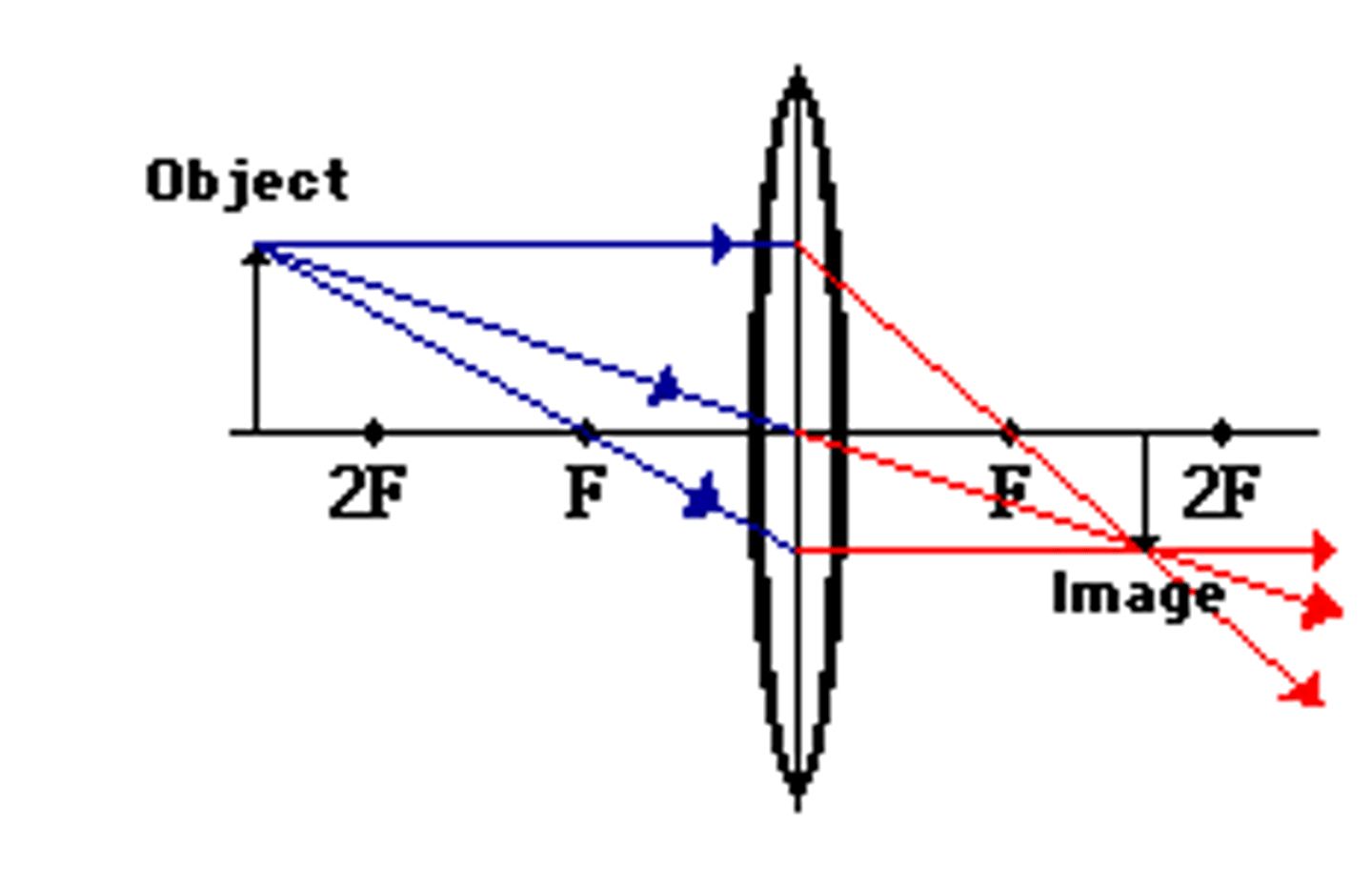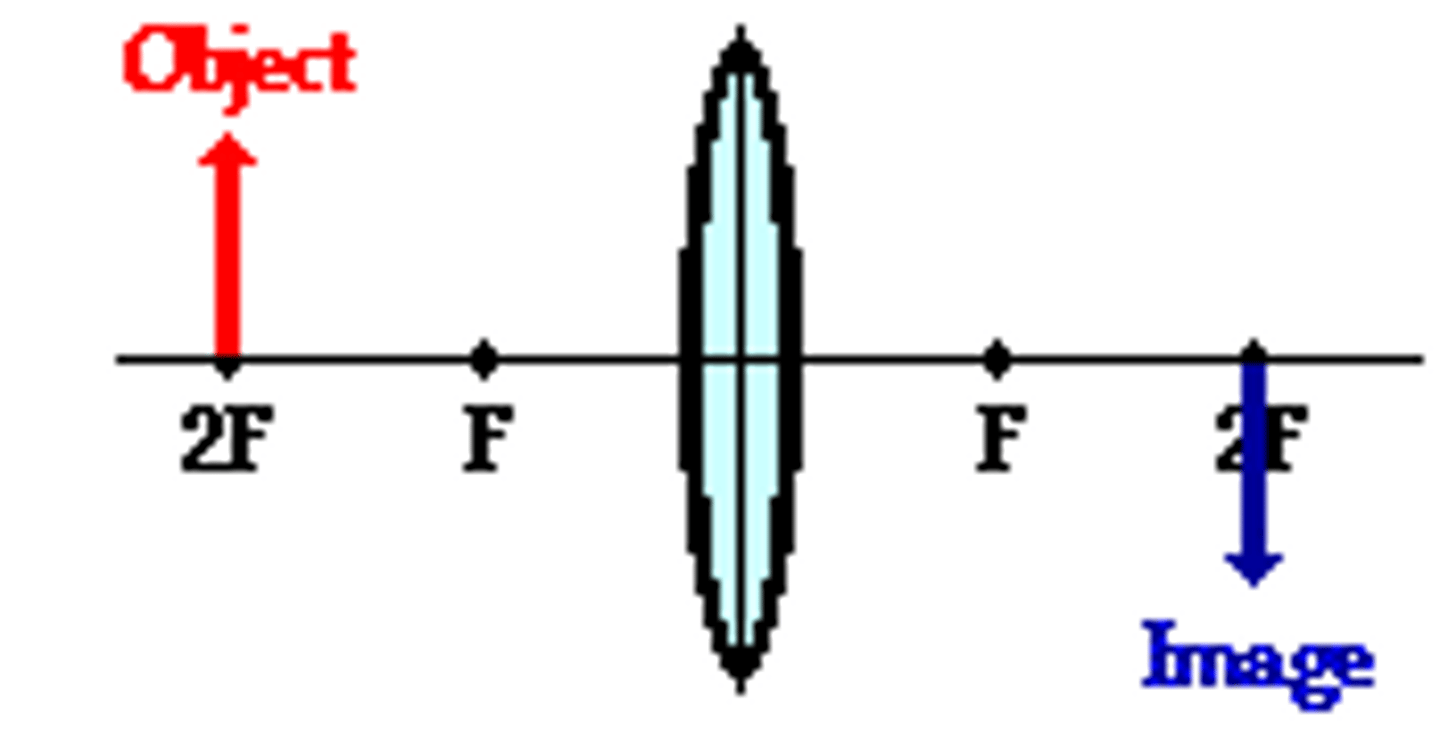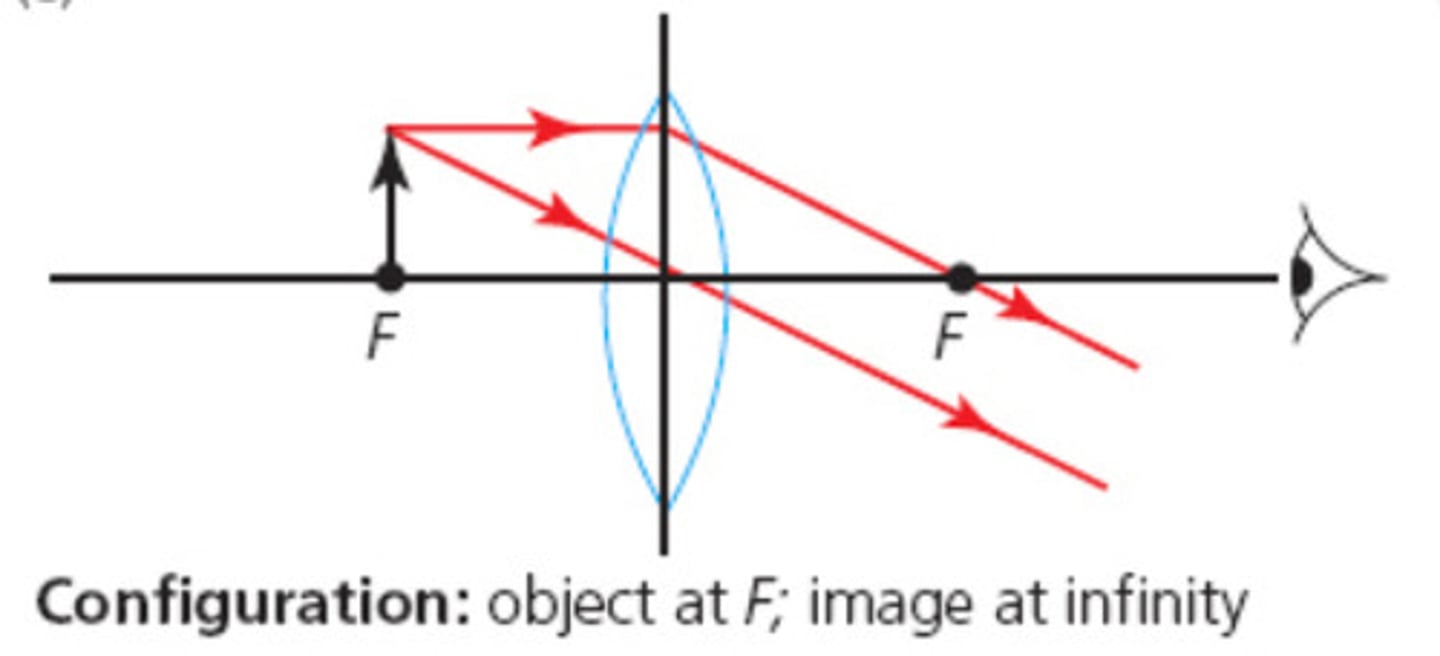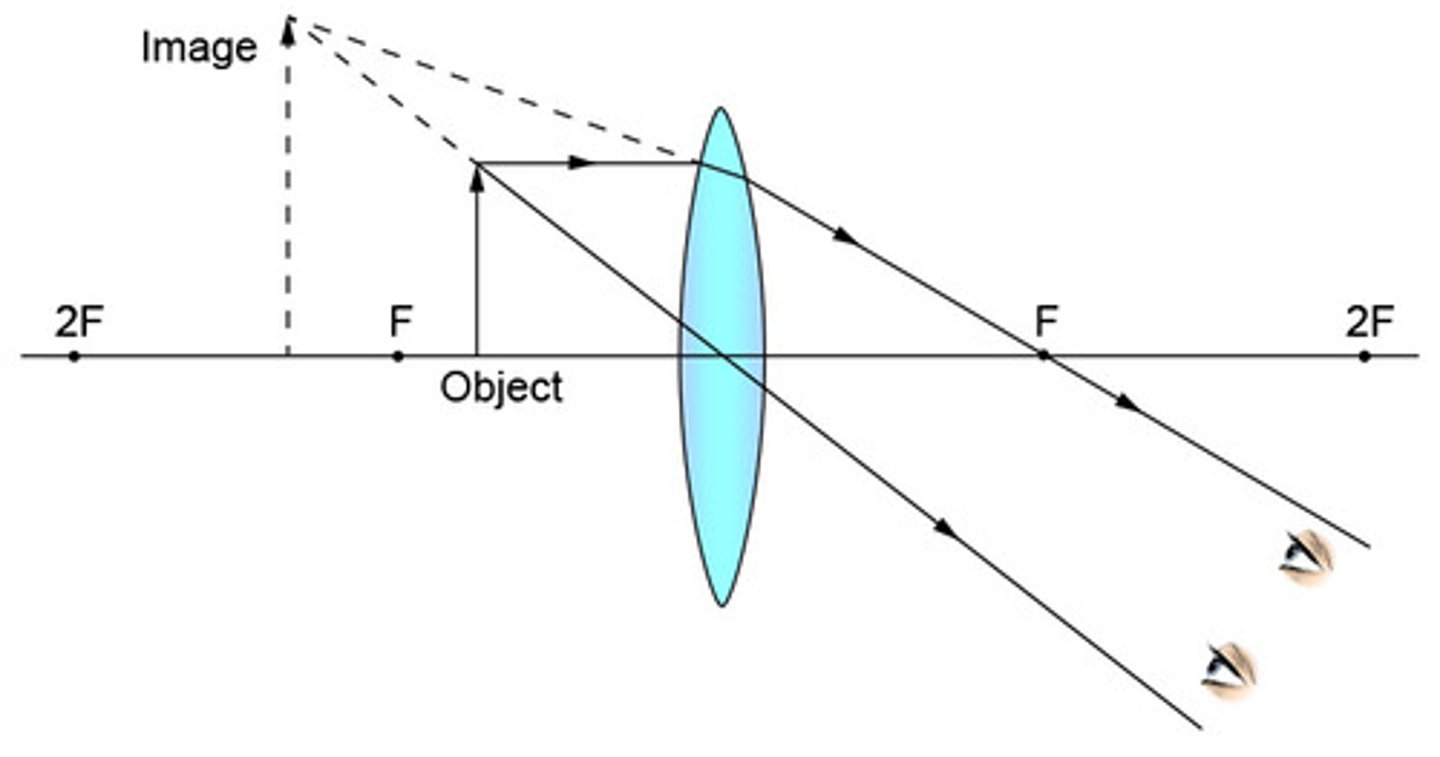Topic 5 - Light and EM Spectrum
1/46
There's no tags or description
Looks like no tags are added yet.
Name | Mastery | Learn | Test | Matching | Spaced |
|---|
No study sessions yet.
47 Terms
Law of Reflection
The angle of incidence will equal the angle of reflection.
Ray Diagram Drawing
Use a ruler and pencil; rays must have arrows to show direction; draw a normal line (90° to the surface); all angles measured between a ray and the normal.
Virtual Image
One that can't be projected onto a screen; light rays appear to meet behind the mirror.
Real Image
One that can be projected onto a screen.
Image in a Mirror
It is virtual, the same size, and laterally inverted.
Light Behavior: Air to Glass
It slows down and refracts towards the normal; the angle of refraction is smaller than the angle of incidence.
Light Behavior: Glass to Air
It speeds up and refracts away from the normal; the angle of refraction is greater than the angle of incidence.
Describe how to investigate how angle of incidence affects the angle of refraction in a rectangular glass block.
Draw around the block with a pencil. Draw the normal to the block and measure out different angles of incidence. Shine light into the block using a ray box at different angles of incidence. Put a cross where the light exits the block and use a ruler to join the points up. Measure the angle of refraction using a protractor. Plot a graph of angle of refraction against angle of incidence.
Critical Angle
The angle of incidence that produces an angle of refraction of 90°; above this, total internal reflection occurs.
Total Internal Reflection
Occurs when light passes from a slower to a faster medium and the angle of incidence exceeds the critical angle; all light is reflected back into the medium.
Uses of Total Internal Reflection
Optical fibres, endoscopes, and decorative lighting.
Describe an investigation to find the critical angle of Perspex.
Shine light along the radius of the block towards the centre using a ray box. Increase the angle of incidence (measured with a protractor) just until total internal reflection occurs. The angle of incidence at this point is the critical angle.
Light Direction in Semi-Circular Block
It's shone along the radius (normal to surface), so the angle of incidence is zero — no refraction occurs.
Specular vs Diffuse Reflection
Specular = smooth surface, consistent angles. Diffuse = rough surface, light scattered. Law of reflection applies to both.
Longest Wavelength Light
Red.
Highest Frequency Light
Violet.
Red object Color in Different Lights
In white light, the red object absorbs all the colours except for red light which is reflected. In blue light, the object absorbs the blue light and so no light is reflected and the object looks black
Blue Filter Action on White Light
It absorbs all colours except blue, which it transmits.
White Light through Prism
It disperses into the spectrum — violet refracts most, red least.
Speed of all EM waves in a vacuum
3 × 10⁸ m/s.
Describe how EM waves travel.
EM waves are transverse waves so oscillations of the electric and magnetic fields are at right angles to the direction of wave travel. EM waves can travel through a vacuum.
Order of EM spectrum from longest to shortest wavelength
Radio → Microwave → Infrared → Visible → UV → X-ray → Gamma.
Highest frequency EM waves
Gamma rays.
Ionising EM waves
UV, X-rays, and gamma rays.
Dangers of microwaves
Internal heating of cells.
Dangers of infrared
Skin burns.
Dangers of UV
Damage to surface cells and eyes → skin cancer, eye damage.
Dangers of X-rays and gamma rays
DNA mutations or cell damage.
EM radiations detectable by the human body
Infrared (skin) and visible light (eyes).
Uses of radio waves
Broadcasting and communications.
Uses of microwaves
Cooking and satellite communications.
Uses of gamma rays
Sterilising and treating cancer.
Uses of infrared
Thermal imaging and remote controls.
Uses of UV
Fluorescent lamps and disinfecting water.
Production and reception of radio waves in an aerial
Oscillating electrons produce radio waves; in receivers, they induce oscillations (currents).
Relate the power of a lens to its focal length and shape
The greater the power of a lens the shorter its focal length as it refracts light more. A more powerful lens is thicker/more curved.
What is the focal length?
The focal length is the distance form the centre of a lens to the focal point.
State the difference between a real image and a virtual image
A real image is one that can be projected on to a screen. In a diagram, rays of light will meet at a point to form the image. A virtual image cannot be projected on to a screen as lines in a ray diagram will have to be traced back to meet
A convex lens is a __________ lens and a concave lens is a ____________ lens
A convex lens is a converging lens and a concave lens is a diverging lens
What are the three principal rays for a converging lens
1. A ray going into the lens parallel to the principal axis will come out through the focal point on the other side of the lens.
2. A ray going through the focal point will come out parallel to the principal axis.
3. A ray going through the middle of the lens at the principal axis will continue straight undeflected.
Describe an image formed in a converging lens for an object outside 2F, give a use for this situation.
Real, Inverted, Diminished. Use: Camera or Human Eye

Describe an image formed in a converging lens for an object at 2F, give a use for this situation.
Real, Inverted, same size. Use: Photocopier

Describe an image formed in a converging lens for an object between F and 2F, give a use for this situation.
Real, Inverted, Magnified. Use: Projector

Describe an image formed in a converging lens for an object at F, give a use for this situation.
No image is formed as the light rays do not converge. Use: Spotlights

Describe an image formed in a converging lens for an object between inside F, give a use for this situation.
Virtual, Upright, Magnified (On the same side as the object) Use: Magnifying glass.

What are the three principal rays for a diverging lens
1. A ray passing through the centre of the lens at the principal axis continues undeflected.
2. A ray parallel to the principal axis refracts as if it came from the focal point on the same side of the lens
3. A ray passing through the focal point (on the opposite side) refracts parallel to the principal axis
Describe an image formed in a diverging lens for an object outside F, give a use for this situation.
Virtual, Upright, Diminished. (On the same side as the object) Use: Peephole in a door. Diverging lenses are also used to correct short-sightedness so light rays converge on the retina.